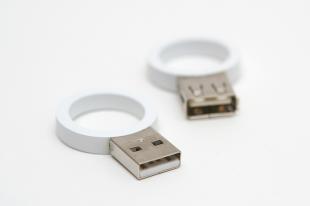USB v SPDIF (v other) is an interesting entire area. I have been trying to read and understand for a few weeks "what is best". I am sure many (most?) are more knowledgable than me on this. So take that as a caveat;
I am not an expert.
Some comments from
this guy I found helpful (youtube hole, sorry). I forget which videos but he said something like "
USB easier to do right than SPDIF". I think that has something to do with the fact that USB can be done asynchronously and SPDIF is synchronous. Another comment related to this in my notes on this topic is:
"async usb-> spdif is probably best to deal with timing errors". (Sorry, not sure of my note's origin).
I think the topic is broader than just the transport of data across devices... Again, I am sure this is just a catharsis for me and others know better, but...
You have to transport the bytes from the data source to the DAC. If the transport is USB, you have noise from USB. This is really noise from the transmitting end coming to the DAC via the USB transport. As one unneeded possible source of noise, the bigger Ideon reclocker has a switch on the back that blocks the pass-through of the power component of USB to the DAC (5v on switch). People sometimes mod their USB cables/ connectors to remove the power component.
As an aside, regarding the noise from power, I noticed that the USB port nearer to the power supply on my Macbook was noisier than the USB port on the far side of the machine. Can't recall if I said that already...
Ultimately you have the data source, upstream of the DAC. How can you generate the cleanest, least needing of correction data stream? Is the switching power supply causing noise? Then you can ideally transport to the next device with the least manipulation required.
Rather than "cleaning up problems", IMO ideally you would go to the start of the chain and
start with the least problems you can. Then you can get the bits to come from a source with the least mangling possible. This is somewhat ironic as I sit here playing with reclockers I realise.
With that in mind, I am trying to get a solid Roon-endpoint that will have a simple job, get music, send to DAC. If
needed, a reclocker
could be in-between, but ideally, I'd like to not need it. I think starting with the best quality
source upstream of the DAC is a good starting point, then getting that signal to the DAC with the least fiddling possible seems desirable to me. I intend to start with an allo usbridge signature with a linear power supply replacing my macbook pro and see how that goes.
(At some point, maybe I'll go whole-hog with a SOtM SMS-200 Ultra Neo, but sheesh, not cheap!)
Regarding o
ne of the units from
@Zachik's post above:
The interface DI-20 by Audio-GD is based on a USB module Amanero Combo 384 coupled to a pair of Accusilicon 90 / 98M clocks. The circuit is designed to provide plethora of options regarding clocks use strategies: interfacing from the internal clocks, following an external clock (slave mode) or offset of the internal clock to another device (master mode). This type of circuit allows for integrations in highly advanced audio systems.
- The GD DI-20 is using the same USB unit as part of the solution that the Amber 3 is.
- The comment on "clock strategies" shows the coordination of clocks topic. Thinking of your system from the high-level with questions like these seem right-minded: What is the source clock? What is slaved to the source clock? I assume you want the best source clock and get the rest of the devices slaved to it? I am not 100% clear on how to setup the ideal clock-strategy, but I am sure there is one

FWIW -
this part of this thread does have more on this generalised topic...
All of this is still blurry in my mind, but clarifying as the days and google-hours go by ...
Coming back to Amber, I have been listening again to the Amber w/ no reclocker. It is lovely and while the bigger Ideon reclocker does add some smoothness, without it the DAC does still sound nice. When I 1st started w/ the Amber I felt there was some
very subtle hash (amidst giant lovely images) that the reclocker does certainly smooth. (Keep that in perspective; the DAC sounds great). To add to the confusion, I *think* I find myself pressing "next song" less frequently
with the reclocker (i.e.; I am more engaged in the music). Later today I'll try the small one...
This post supported in part by:






























 .
.


 . A cool 7hrs has passed in pleasure. Poor me!
. A cool 7hrs has passed in pleasure. Poor me!
